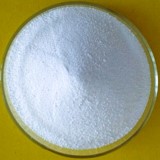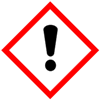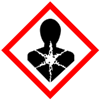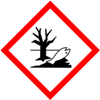 |
Atorvastatin Calcium SDS Safety Data Sheet of Supplier Exporter Manufacturers' Representative |
Email: info@ammol.org |
Call Toll Free +1-855-552-6665 |
Atorvastatin Calcium
CAS Number: 134523-03-8 for Anhydrous and 344423-98-9 for Trihydrate
Molecular Formula: C66H68CaF2N4O10
Molecular Weight: 1155.36

Atorvastatin Calcium
Atorvastatin Calcium Anhydrous Trihydrate SDS, Safety Data Sheet, MSDS, Material Safety Data Sheet 20-Jan-25
SECTION 1. PRODUCT IDENTIFICATION
Product Name & Other Names: Atorvastatin Calcium Anhydrous Trihydrate.
CAS Number: 134523-03-8 for Anhydrous and 344423-98-9 for Trihydrate
EINECS EC Number: 627-026-0 or 658-046-8
Relevant uses and uses advised against (if any): Industrial Manufacturing.
Supplier: As per the letterhead.
SECTION 2. HAZARDS IDENTIFICATION
GHS, Globally Harmonized System Classification in accordance with 29 CFR 1910
Classification according to Regulation (EC) No 1272/2008
Eye irritation, (Category 2) H319
Specific target organ toxicity, repeated exposure (Category 2), H373
Long-term (chronic) aquatic hazard (Category 2), H411
Labeling according to GHS USA & Regulation (EC) No 1272/2008
GHS Label Elements  Irritant |
GHS Label Elements |
GHS Label Elements |
Signal Words: Danger
Hazard statements:
H319: Causes serious eye irritation.
H373: May cause damage to organs through prolonged or repeated exposure.
H411: Toxic to aquatic life with long lasting effects.
Precautionary statements:
P261: Avoid breathing dust/ fume/ gas/ mist/ vapors/ spray.
P262: Do not get in eyes, on skin, or on clothing.
P270: Do not eat, drink or smoke when using this product.
P271: Use only outdoors or in a well-ventilated area.
P280: Wear protective gloves/protective clothing/eye protection/face protection.
P302+P352: IF ON SKIN: Wash with soap and water.
P304+340: IF INHALED: Remove victim to fresh air and keep at rest in a position comfortable for breathing.
P305+P351+P338: IF IN EYES: Rinse cautiously with water for several minutes. Remove contact lenses, if present and easy to do. Continue rinsing.
P337+P313: If eye irritation persists: Get medical advice/ attention.
SECTION 3. COMPOSITION / INFORMATION ON INGREDIENTS
Product Name & Other Names: Atorvastatin Calcium Anhydrous Trihydrate.
CAS Number: 134523-03-8 for Anhydrous and 344423-98-9 for Trihydrate
EINECS EC Number: 627-026-0 or 658-046-8
SECTION 4. FIRST AID MEASURES
Always seek medical attention after first aid measures are provided.
Eye Contact: Do not allow victim to rub eye (s). Let the eye (s) water naturally for a few minutes. If particle/dust does not dislodge, flush with lukewarm, gently flowing water for 5 minutes or until particle/dust is removed, while holding eyelid (s) open. If irritation persists, obtain medical attention. DO NOT attempt to manually remove anything stuck to the eye.
Skin Contact: Remove contaminated clothing, shoes, and leather goods (e.g., watchbands, belts). Quickly and gently blot or brush away excess chemicals. Wash gently and thoroughly with lukewarm gently flowing water and non-abrasive soap for 5 minutes. If irritation persists, repeat flushing. Obtain medical advice.
Inhalation: If symptoms are experienced, remove source of contamination or move victim to fresh air. Obtain medical advice.
Ingestion: Never give anything by mouth if victim is rapidly losing consciousness or is unconscious or convulsing. Have the victim rinse their mouth thoroughly with water. DO NOT INDUCE VOMITING. Have the victim drink 2 – 8 oz. (60 – 240 ml) of water.
SECTION 5. FIRE FIGHTING MEASURES
Fire and Explosion Hazards: Not a fire hazard. It may burn at high temperature
Extinguishing Media: Use means of extinction appropriate for the surrounding fire conditions such as water spray, carbon dioxide, dry chemical, or foam. Avoid solid water jet.
Fire Fighting: Apart from oxides of carbon, oxides of nitrogen, fluorine compounds, calcium oxide, toxic fumes may result from combustion. As with any fire, fire-fighters should be fully trained and wear full protective clothing including an approved, self-contained breathing apparatus which supplies a positive air pressure within a full-face piece mask. Do not use water directly on material. Do not allow water run-off to enter sewers or watercourses. Use water spray to cool unopened containers.
SECTION 6. ACCIDENTAL RELEASE MEASURES
Procedures for Cleanup: Stop release, if possible, to do so safely. Contain spill, isolate hazard area, and deny entry. Sweep up or vacuum. Place contaminated material in suitable, labeled containers for final disposal.
Personal Precautions: Gloves and coveralls or other protective clothing are recommended for persons responding to an accidental release. Close-fitting safety goggles may be necessary in some circumstances to prevent eye contact.
Environmental Precautions: Contamination of soil and water should be prevented.
SECTION 7. HANDLING AND STORAGE
Precautions for safe handling: Apply according to good manufacturing and industrial hygiene practices. Ensure proper ventilation. Wash thoroughly after handling. Do not drink, eat, or smoke while handling. Avoid contact with skin, eyes, and clothing. Minimize dust generation. Avoid breathing dust/fumes/gas/mist/vapors/spray. Keep container tightly closed. Avoid ingestion and inhalation. Use individual protective equipment (waterproof boots, suitable protective clothing, safety glasses, etc.).
Conditions for safe storage, including any incompatibilities: Keep away from sources of ignition - No smoking. Take measures to prevent the build-up of electrostatic charge. Store in cool, dry, and ventilated area away from heat sources and protected from sunlight in tightly closed original container. Keep air contact to a minimum. generating dust and the release of dust into the workplace. Do not leave the material container open. Store protected from heat, sparks and ignition sources and incompatible materials. Do not store with incompatible materials like oxidizing agents. Storage: Refrigerate. OK to freeze. Short term shipping may be ambient. Protect from light.
SECTION 8. EXPOSURE CONTROLS / PERSONAL PROTECTION
Exposure Limits: This product does not contain any hazardous materials with occupational exposure limits established by the region-specific regulatory bodies.
Ventilation System: A system of local and/or general exhaust is recommended to keep employee exposures as low as possible.
Personal Respirators (NIOSH Approved): For conditions of use where exposure to dust or mist is apparent and engineering controls are not feasible, a particulate respirator may be worn.
Skin Protection: Wear protective gloves and clean body-covering clothing.
Eye Protection: Use chemical safety goggles and/or full-face shield where dusting or splashing of solutions is possible. Maintain eye wash fountain and quick-drench facilities in work area.
Other Control Measures: Maintain good housekeeping in work area. Handle in accordance with good industrial hygiene and safety practice. Wash hands after handling.
SECTION 9. PHYSICAL AND CHEMICAL PROPERTIES
Appearance: White or almost white powder. Hygroscopic.
Odor: No information found.
Odor threshold: No information found.
pH in 1 % solution: No information found.
Relative density: No information found.
Melting point/freezing point: 176C- 178C literature.
Initial boiling point and boiling range: 722C literature.
Flash point: No information found.
Auto-ignition temperature: No information found.
Decomposition temperature: No information found.
Upper/lower flammability or explosive limits: No information found.
Vapor pressure: No information found.
Vapor density: No information found.
Evaporation rate: No information found.
Flammability (solid, gas): No information found.
Partition coefficient: n-octanol/water: No information found.
Solubility(ies): Very slightly soluble in water, slightly soluble in ethanol.
Viscosity: No information found.
SECTION 10. STABILITY AND REACTIVITY
Stability and Reactivity: Stable and not considered reactive under recommended temperatures and pressures. Hazardous polymerization or runaway reactions will not occur.
Incompatibilities: Oxidizing agents. Avoid excessive heat.
Hazardous Decomposition Products: High temperature operations will generate carbon oxides, nitrogen oxides fluorine compounds, calcium oxide and fumes.
SECTION 11. TOXICOLOGICAL INFORMATION
Acute Toxicity Oral LD50 Rat: > 5000 mg/kg Rat.
Dermal LD50 Rabbit: > 2.000 mg/kg
May cause damage to organs through prolonged or repeated exposure.
Carcinogenicity: No component of this product present at levels greater than or equal to 0.1% is identified as possible or confirmed human carcinogen by IARC, ACGIH, OSHA and NTP.
Teratogenic Effects: No information found.
Mutagenic Effects: No information found.
Developmental Toxicity: No information found.
Reproductive Effects: No information found.
SECTION 12. ECOLOGICAL INFORMATION
Ecotoxicity:
Toxicity to fish: LC50 - Oncorhynchus mykiss (rainbow trout) - > 92 mg/l - 96 h.
Persistence and Degradability: Not readily biodegradable.
Mobility: No information found.
Bioaccumulation/ Accumulation: No information found.
Results of PBT and vPvB assessment: No information found for assessment.
SECTION 13. DISPOSAL CONSIDERATIONS
Do not wash the material down drain. Put uncontaminated material back into the process if possible. Follow all the pollution control rules.
SECTION 14. TRANSPORT INFORMATION
DOT USA, TDG Canada & ADR/RID Europe: Not dangerous goods.
IATA/ICAO: Not dangerous goods.
IMDG/IMO: Not dangerous goods.
SECTION 15. REGULATORY INFORMATION
USA Regulations:
SARA 311/312 Hazards: See section 2.
SECTION 16 - ADDITIONAL INFORMATION
Disclaimer:
**************************
Our company provides this MSDS sheet in good faith but makes no representation as to its comprehensiveness or accuracy. This SDS sheet is intended only as a guide to the appropriate precautionary handling of the material by a properly trained person using this product. The above information has been compiled from various sources and has the possibility of discrepancy and being out-dated information. Individuals receiving the information must exercise their independent judgment and do further search in determining its appropriateness for a particular purpose. In no case shall our company be liable to loss or damages by the product user.
**************************
Please visit Main Page of Atorvastatin Calcium Suppliers.
American Molecules, also known as ammol.org is a distributor, supplier and manufacturers' representative of all types of Pharmaceuticals, Functional Ingredients, Excipients and Specialty Chemicals in Texas USA. Our principals manufacture supply and export USP NF BP, Ph Eur, etc grades of chemicals pure and reagent grade, mineral fortifiers, FCC food grade. Tailor made particle size and customized specifications are offered. The principal's facility is having one or more of the certifications like FDA approval and GLP, cGMP, ISO9001, ISO14001, ISO/IEC 17025, ISO22000, FSSC 22000, ISO45001, FSSAI, Kosher, HALAL, COPP, WHO-GMP certified and Written Confirmation (WC) for export to Europe is available. The manufacturers suppliers and exporters observe WHO Good Manufacturing Practices and Good Laboratory Practices.





Suppliers and Manufacturers' Representative:

9910 Bent Oak Dr
Houston, TX 77040, USA
Call Toll Free: 1-855-55-AMMOL 1-855-552-6665
Email: info@ammol.org

